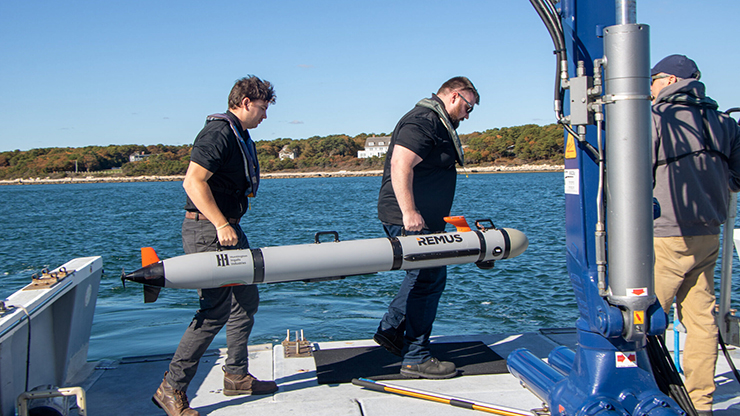
Washington: The US Navy has awarded HII a contract worth up to $347 million to purchase up to 200 unmanned undersea vehicles, the first major acquisition for the Navy’s Lionfish program, the company announced.
The initial buy for nine UUVs and associated support, worth roughly $19 million, was made on September 28 through the Defence Department’s daily contract listings, but that statement did not include details about the number of drones being initially purchased or the contract’s 200 vehicle ceiling.
“Lionfish provides increased capability and interoperability that aligns with the Navy’s undersea priorities, and we look forward to delivering next-generation vehicles that can readily adapt to and support a variety of mission needs,” Andy Green, executive vice president of HII and president of its Mission Technologies division, said in a company statement.
“Lionfish” is the Navy’s name for its Small Unmanned Undersea Vehicle program, based on HII’s Remus 300 UUV design but with a series of service-requested tweaks. The Navy, in conjunction with a competition administered by the Defence Innovation Unit, last year selected the Remus 300 for the program over a competing offering from L3Harris. The UUV is also in use by New Zealand’s Navy, which purchased four units in 2021.
For the US Navy, Lionfish’s primary purpose will be intelligence gathering with the service’s expeditionary mine countermeasures company. The drone weighs roughly 150 pounds and can be deployed by only a few sailors. The initial purchase for the program of record comes as the service is taking multiple steps to transition away from the experimental efforts that have been at the forefront of its unmanned systems portfolio in recent years and instead integrate the technology at scale.
Duane Fotheringham, president of unmanned systems at HII Mission technologies, hopes the changes requested by the Navy on the Remus 300 will be contained to a single compartment of the UUV. That is an intentional choice HII is making in an effort to mimic the Navy’s preferred direction for unmanned systems: modular, open systems architecture with a host of plug-and-play opportunities from other companies developing useful payloads.














